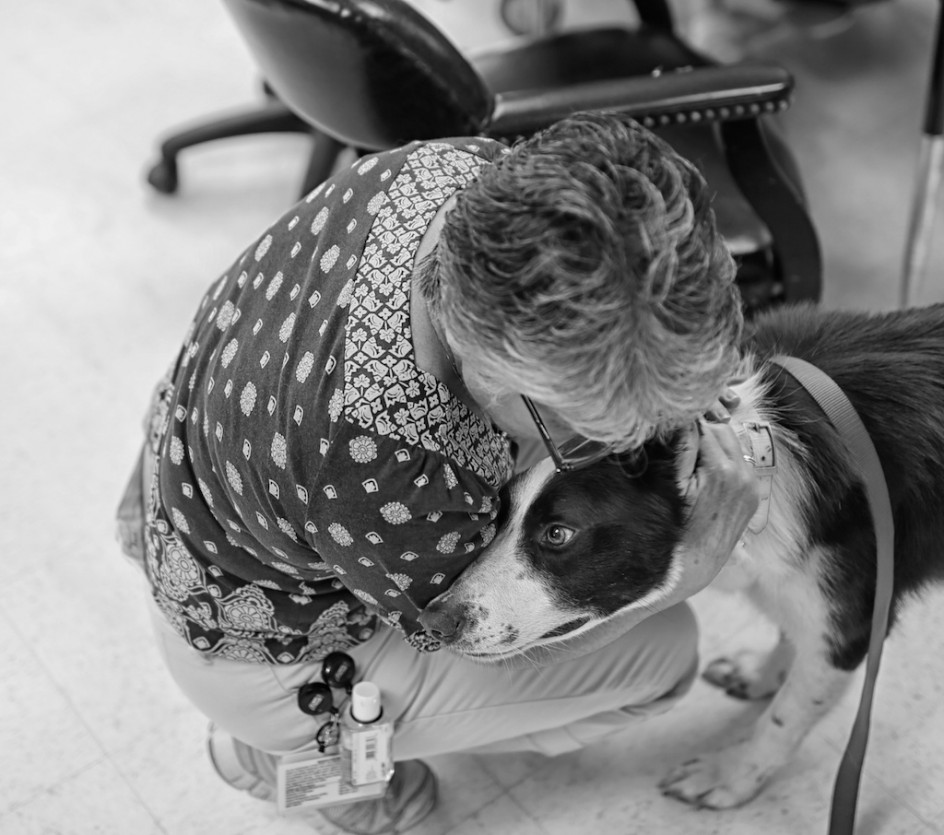
The therapy dog must be of strong temperament, at all times.
He must connect with the patients in some way, physically, through eye contact.
He must be grounded, steady in the face of shouts, noises, cries, wheelchairs and walkers.
He must resist the food that is everywhere – on hands, clothes, on the floor, in chairs, on tables.
He must attend to the caretakers as well as the patients.
He must have endurance, the ability to stay focused on one person, one task for long
periods of time, not natural to most dogs.
He must not make mistakes of any kind, he must never cause harm or fright or disappointment.
He must be aware of his handler at all times, be responsive to the slightest commands,
often given with whispers and hand signals.
He must have a nearly bottomless reservoir of affection and focus, as he will be rubbed, handled,
hugged, talked to endlessly and without respite.
He must tolerate being hugged, squeezed, pulled in the most intense of ways.
He must learn what his work is over time, it is people in need of him, people giving him unfocused attention.
That is the work for which he must be endlessly and clearly reinforced.
The therapy dog is a particular kind of dog.

